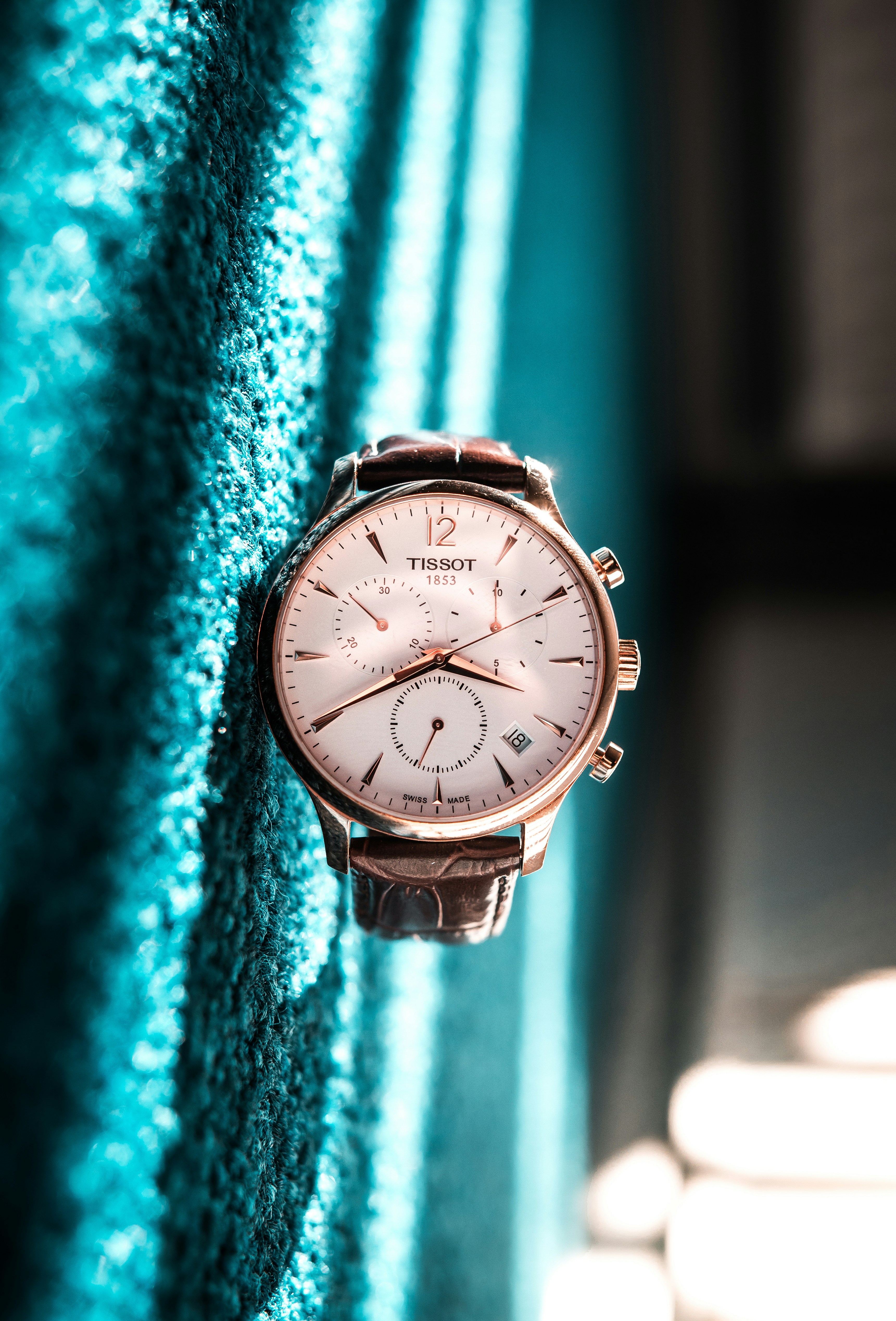Best Practices for Winback Emails in Jewelry & Luxury Accessories

Reactivating lapsed buyers in jewelry and luxury accessories is a balancing act: you must unlock incremental revenue without dulling the brand’s aura. After a decade running CRM for premium brands, I’ve found the teams that win are the ones that build winback around time-between-purchases, exclusivity, and service—not blanket discounts.
Below is a field-tested blueprint tailored for luxury and jewelry. It’s deliberately specific so you can implement it immediately and avoid the pitfalls that erode brand equity.
1) Why luxury/jewelry winback is different
- High AOV and long consideration cycles mean fewer, higher‑impact touches outperform frequent pushes.
- Price-driven tactics can backfire by training customers to wait for discounts and weakening perceived craftsmanship and scarcity.
- 2024–2025 consumer context reinforces this: leading analysts recommend experience-led value over price competition. For example, McKinsey’s State of Fashion commentary in 2025 underscores that competing on discounts erodes positioning and urges experience upgrades to justify premiums, as outlined in the McKinsey State of Fashion 2025. Deloitte echoes this in its 2025 outlook, emphasizing occasion-based experience over price cuts in the Deloitte 2025 Consumer Products Industry Outlook.
Implication: Your winback must feel like an invitation back into a world of craft, service, and belonging—not a clearance sale.
2) Build segmentation and timing on your own TBP (time-between-purchases)
Do not copy generic inactivity windows. Use your data to set triggers.
- Measure TBP by subcategory: fine jewelry, bridal, fashion jewelry, watches, small leather goods. Use the median for returning customers.
- Create tiered triggers relative to TBP:
- Pre‑lapse nudge: TBP minus ~10% (remind, inspire; no offer)
- Soft re‑engage: at TBP (story + exclusive content or service)
- Stronger value: TBP + 25–50% (service-led value; early access)
- Final attempt: TBP + 100% (last invitation; then suppress if no engagement)
- Practical starting bands (validate against your TBP): 90, 120, 180, 270 days. Jewelry cycles often skew longer than mass retail—test accordingly.
Micro‑segmentation that materially improves results:
- VIP/LTV tiers: treat top cohorts with concierge-only benefits and fewer emails.
- Last purchase type and context: bridal (anniversaries), fashion (seasonal drops), watch (service intervals), gifts (calendar occasions).
- Life events and signals: birthdays, anniversaries, wishlists, viewed items.
- Channel affinity: email‑first vs SMS‑friendly; regional store availability.
- Predicted churn/propensity: prioritize at‑risk high‑CLV cohorts for human or concierge touches.
3) Preserve luxury with value mechanics that aren’t discounts
Discounts can dilute brand value. Instead, use value that reinforces your positioning:
- Access: early previews, limited editions, atelier/private tour invites, waitlist priority.
- Service: complimentary cleaning, inspection, resizing, engraving, strap replacement, styling consults.
- Personal touches: founder/creative director note, maker’s provenance, behind‑the‑workshop story.
- Community and status: VIP events, by‑appointment concierge, repair/refresh programs with named specialists.
Why this works: It aligns with the 2025 guidance that premium brands should lean into experience and occasion-based value rather than price. See the perspective in the McKinsey State of Fashion 2025 and the Deloitte 2025 Consumer Products Industry Outlook.
Framing matters. Instead of “15% off,” use:
- “Your pieces deserve care: enjoy a complimentary cleaning appointment this month.”
- “Private preview: a first look at our capsule before it’s public.”
- “We set aside a slot with our engraver—shall we pencil you in?”
4) Creative that wins hearts without feeling salesy
Luxury email should be quiet, confident, and intentional.
- Voice: speak as a person, not a program. A short note signed by the founder, head of atelier, or concierge feels appropriate.
- Narrative arc: tie to milestones—anniversaries, promotions, new chapters—and to the craft journey (materials, methods, provenance).
- Layout: generous white space, refined typography, one primary CTA. Avoid loud banners and crowded grids.
- Content blocks that perform in luxury:
- A personal opener (40–60 words) that acknowledges their taste and past relationship.
- A story tile (craftsmanship, heritage, atelier), optionally with a subtle video thumbnail.
- A service tile (complimentary cleaning/engraving appointment link).
- A curated recommendation row (2–3 items max) based on past category.
- A gentle CTA: “Request access,” “Schedule your visit,” “Resume your journey.”
- Subject line examples:
- “We saved you a seat.”
- “A private invitation—crafted for you.”
- “Your piece deserves care: a complimentary visit.”
- “Before we open the doors to everyone else…”
5) A winback sequence blueprint (2–5 emails, 5–7 day spacing)
Triggered flows consistently outperform broad campaigns in retail and ecommerce, and lifecycle re‑engagement is a recommended pillar in 2025 playbooks. See the guidance in the Litmus Retail & Ecommerce Email Marketing Playbook (2025). For winbacks specifically, Klaviyo advises testing 2–5 touch sequences and timing windows, as covered in Klaviyo’s winback best practices and examples.
Here’s a luxury‑safe baseline you can adapt:
-
Email 1 (Day 0): “We saved you a seat.”
- Goal: rekindle affinity. No offer.
- Content: 40–60 word personal note; link to a new lookbook; subtle story of material provenance or atelier.
- CTA: “View the private preview.”
-
Email 2 (Day 7): Service‑led value.
- Goal: create a reason to return that reinforces ownership pride.
- Content: complimentary cleaning/inspection invitation; add a booking link; include a styling or care tip relevant to their last category.
- CTA: “Book your appointment.”
-
Email 3 (Day 14): Access & scarcity.
- Goal: introduce time‑bound access; minimal urgency.
- Content: early access window to a limited capsule, or engraving slots held this week.
- CTA: “Request access.”
-
Optional Email 4 (Day 28, VIP only): Human outreach.
- Goal: concierge‑level reconnection for high‑CLV cohorts.
- Content: short note from a named concierge offering a call or boutique visit.
- CTA: “Reply to this email” or a direct booking link.
-
Failsafes:
- If no opens across the sequence, suppress future promotional sends and try a re‑permission flow later (especially for EU contacts).
- If opens but no clicks, try a single channel‑switch nudge (e.g., SMS invite for VIPs who’ve opted in) and then pause.
6) Automation, AI, and measurement that respect luxury
- Predictive segmentation: Use churn risk and predicted CLV to prioritize who receives human touches versus automated touches. ESPs increasingly provide these models; for example, Klaviyo documents predictive analytics for churn and purchase propensity in 2024–2025 resources such as the Klaviyo predictive analytics overview.
- Dynamic content: Inject care tips matching the last category, regional store options, and recommended pieces adjacent to past purchases.
- Cadence guardrails: Cap total touches per month for lapsed luxury cohorts; decay quickly on non‑engagement to protect brand feel and sender reputation.
- KPIs to track:
- Reactivation rate (orders from previously lapsed customers within 30 days of sequence)
- Time‑to‑reactivation (days from first winback send to purchase)
- Incremental revenue per reactivated customer (vs holdout)
- CLV delta for reactivated vs. never‑reactivated cohorts
- Complaint rate and unsubscribe rate by segment
- Why automation matters: Across large datasets, automated lifecycle emails drive a disproportionate share of revenue relative to send volume. The 2025 analysis from Omnisend shows automated emails significantly outperform campaigns on open, click, and conversion, detailed in the Omnisend 2025 Ecommerce Marketing Report.
7) Deliverability, compliance, and list hygiene (2024–2025 rules)
Bulk sender policies tightened in 2024 and continue to be enforced. If you don’t adapt, inbox placement will erode—especially harmful for premium brands.
- Authentication & policy
- Publish SPF and DKIM with proper alignment.
- Publish a DMARC policy (at least p=none) and work toward alignment, as called out in Google’s 2024 update here: Gmail’s bulk sender requirements.
- Unsubscribe & complaints
- Enable one‑click list‑unsubscribe headers and honor within 2 days (Gmail/Yahoo requirement; corroborated in technical overviews such as AWS’s summary of Gmail/Yahoo changes).
- Keep spam complaint rates ideally under 0.1% and never at or above 0.3% for bulk traffic (per Google communications and Postmaster guidance).
- Legal frameworks to respect
- CAN‑SPAM (U.S.): truthful headers and subjects, your physical address, and a working opt‑out. See the FTC’s guidance: CAN‑SPAM compliance guide.
- GDPR/ePrivacy (EU): opt‑in and transparent consent; easy withdrawal; keep records of consent.
- CCPA/CPRA (California): data rights and opt‑out of sale/sharing; clear notices.
- Hygiene
- Remove hard bounces immediately; suppress chronic non‑engagers (sunset policy by region).
- Monitor Google Postmaster data; segment by engagement to protect deliverability.
Operational QA checklist for every winback flow:
- DKIM/SPF/DMARC aligned; Postmaster Tools monitored weekly
- One‑click list‑unsubscribe present; working preference center linked
- Regional consent logic (GDPR) and data rights (CCPA/CPRA) respected
- Send‑time testing constrained to 5–7 day spacing; frequency caps enforced
- Seed tests and live device tests passed; images/links compressed and tagged
8) Luxury vs. mid‑market: what changes in practice
- Mid‑market brands often rely on frequent discounts and broad catalogs. This can yield quick spikes but conditions the audience to buy only on sale.
- Luxury and fine jewelry teams see better long‑term outcomes by reducing frequency, elevating service and access, and using human or concierge touches for top cohorts. The cost per touch is higher, but it compounds trust and CLV.
- Execution changes:
- Subject lines: curiosity and invitation vs price‑first.
- CTAs: “Request access” or “Book a visit” vs “Shop now.”
- Creative: story and service tiles vs large promotional banners.
- Offers: care/engraving/early access vs sitewide codes.
9) Pitfalls to avoid (hard‑won lessons)
- Over‑discounting: short‑term lifts, long‑term brand erosion and trained discount behavior.
- Over‑frequency: more than one touch per week in a winback often increases complaints for premium cohorts; pacing wins.
- Misaligned tone: loud banners, exclamation‑heavy copy, and generic product grids feel off‑brand.
- Ignoring consent and region: sending winbacks to EU contacts without documented opt‑in invites risk and damages trust.
- No suppression policy: continuing to email non‑openers drags deliverability down, hurting your best segments.
10) Quick implementation checklists
Segmentation & timing
- [ ] TBP calculated per subcategory; triggers set at pre‑lapse, TBP, TBP+25–50%, TBP+100%
- [ ] VIP tiers defined; concierge branch for top CLV
- [ ] Life‑event fields and product care intervals captured and used
- [ ] Predicted churn enabled; high‑risk cohorts prioritized
Creative & offer
- [ ] Personal note opener (40–60 words), signed by a real person
- [ ] One story tile (craft/provenance) + one service tile (care/engraving)
- [ ] 2–3 curated items aligned to past category
- [ ] Access or service benefit framed as a privilege (no broad discounts)
- [ ] Minimalist layout; one primary CTA per email
Automation, QA, and measurement
- [ ] 2–5 email sequence; 5–7 day spacing; frequency caps
- [ ] Holdout testing for lapsed cohorts to measure incremental lift
- [ ] KPIs tracked: reactivation rate, time‑to‑reactivation, incremental revenue/reativated customer, CLV delta
- [ ] Complaint rate monitored by segment; immediate suppression rules
- [ ] Authentication, list‑unsubscribe, consent, and preference center validated
11) Benchmarks and calibration
Treat third‑party benchmarks as direction, not gospel—especially in luxury. The 2025 datasets broadly show that automated lifecycle flows outperform one‑off campaigns on engagement and conversion, per the Omnisend 2025 Ecommerce Marketing Report and lifecycle guidance in the Litmus Retail & Ecommerce Playbook (2025). For sequence length and timing, see Klaviyo’s winback playbook. Use these as starting points and calibrate to your TBP, CLV tiers, and complaint thresholds.
If you implement one change this quarter, make it this: rebuild your winback around your own TBP and replace discounts with service and access. The result is a program that protects your brand while reactivating customers who buy for meaning, not markdowns.
